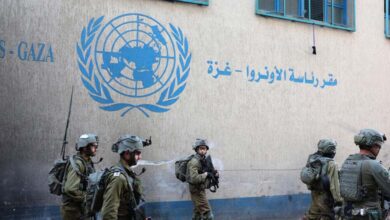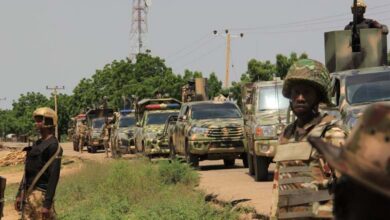Washington proposes resolving the crisis of Hamas fighters in Rafah by relocating its leaders

The Trump administration is pressuring Israel to approve a mediators’ proposal granting fighters trapped in one of Rafah’s tunnels a “safe passage.”
The US administration is seeking to link the resolution of the crisis involving Hamas fighters besieged in Rafah, in the southern Gaza Strip, with ongoing understandings regarding the relocation of some of the movement’s leaders outside the territory, as part of President Donald Trump’s plan, according to the Israeli Broadcasting Authority on Sunday.
-
During the recovery of a hostage’s remains in Gaza, Hamas admits to deceiving Israel
-
Amnesty for Weapons – A New U.S. Proposal to Resolve the Hamas Issue
According to the authority, citing unnamed informed sources, Washington is pressuring Israel to approve the mediators’ proposal granting the fighters a “safe passage” allowing them to leave areas controlled by the Israeli army within the “yellow line,” despite official Israeli objections.
Rafah lies within the areas controlled by the Israeli army east of what is known as the “yellow line,” defined under the ceasefire agreement that came into effect on October 10.
According to the Kan news website of the same authority, mediators propose allowing the Hamas fighters trapped in eastern Rafah to move through a “secure corridor” to areas inside Gaza not under Israeli control, with this route later serving as a model for relocating certain Hamas leaders as part of a broader political agreement.
-
Hamas Fighters Inside the Yellow Line: A New Test for the Gaza Ceasefire
-
Eight Remain… Israel Reveals the Identities of Three Bodies Handed Over by Hamas
The authority reported that no progress has been made so far and that three armed Hamas pockets remain in areas controlled by the Israeli army in Rafah, Khan Younis in the south, and Beit Hanoun in the north, with no clear numbers on the fighters involved.
The sources added that contacts among the involved parties included a commitment to neutralize tunnels around Rafah after the fighters’ evacuation, followed by “establishing a pilot model of a Hamas-free Gaza city in the area, accommodating residents not affiliated with the movement, with an international force overseeing
security and administration.” Israeli sources believe that Israel may show more flexibility once Hamas fulfills its commitments regarding the hostages held in Gaza.
-
Hamas’ announcement of finding two bodies boosts chances of sustaining the ceasefire
-
Safe Corridor… Details of a New US Offer to Hamas in Gaza
The crisis of fighters trapped in Rafah erupted after two security incidents following the agreement: the first on October 19 and the second on October 28, during which Israel claimed clashes with Palestinian fighters and accused Hamas of violating the agreement.
For its part, Hamas’s armed wing, the Al-Qassam Brigades, stated in its first response that “contact with the remaining groups in Rafah has been lost since the war resumed last March.”
A report by the Cairo News channel previously stated that Israel was attempting to exploit this crisis to sabotage the agreement.
-
Five Options on the Table if Hamas Declines to Return Hostages’ Remains
-
Hamas bullets dictate the ceasefire in Gaza… as international pressure mounts for disarmament
Last Tuesday, the authority also reported a “dispute between the United States and Israel” over resolving the crisis of fighters stranded in Rafah.
The authority said that US envoy Jared Kushner “sent a message to Israel stressing the need to allow all fighters” to move to areas west of the “yellow line,” which are under Palestinian control. According to him, they would be released without weapons, constituting part of Gaza’s disarmament process.
According to the authority, Israel rejected the proposal, quoting an unnamed Israeli official saying: “This is a naïve proposal; their weapons will be waiting for them in their homes.”
-
Why is Hamas considered a threat to Germany’s security?
-
Hamas executions in Gaza: consolidation of power or elimination of rivals?
The authority also reported expectations that both parties might reach a settlement, given the American desire to prevent Israel from collapsing the agreement “by blowing up the tunnel or flooding it.”
Israeli officials are calling for the surrender of these fighters and their transfer to Israel for interrogation, or their elimination if they refuse to surrender. The Al-Qassam Brigades reaffirmed Sunday that “the concept of surrender or giving oneself up to the enemy does not exist in our doctrine.”












